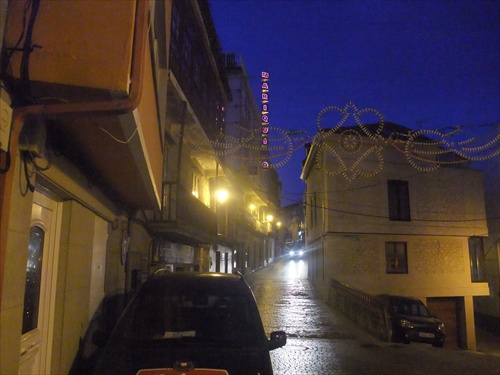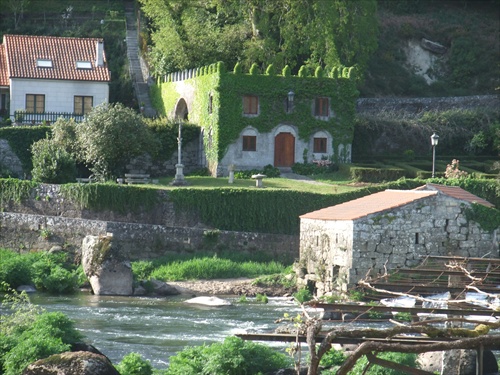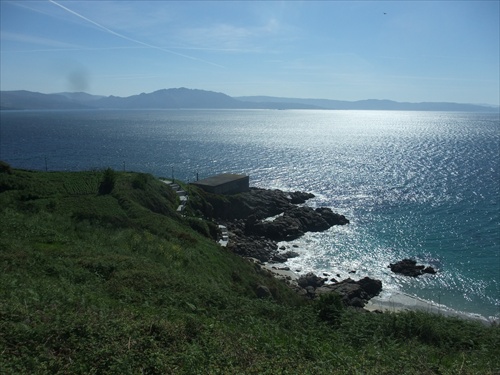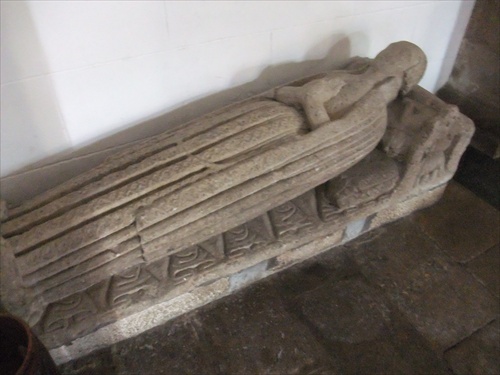All the talk of early Christians floating the body of Saint James into the Atlantic, then round the coast to Galicia…
All the stories about Charlemagne coming west to the tomb of the saint somewhere near Fisterra…
The belief that Compostela means Field of Stars…
Replace it all with some different stories. Will it matter?
Speculate, if you will, about Santiago’s pre-Roman significance. People say Celts were making pilgrimages to or through here before the birth of Christ. The word Compostela most likely means “well constructed”, a reference to its new fortifications after Al Mansur wrecked the town in the eleventh century. Yet it may also mean “burial place” and the notion might be traced back to Celtic burials, rather than James. If you want more, there’s the chance that the name refers to ancient mines.
Even if you like “Field of Stars”, the stars might be those of the Milky Way which guided Charlemagne to the west; but they might be the guiding star(s) that appeared to a shepherd in 813 AD, who told his bishop, who then found the bones of Saint James in Compostela, not on the coast – which rather takes Charlemagne out of the picture. (This is Spain, and Santiago doesn’t want to share its saint with a fishing town fifty miles away.)
Really, just take your pick of stories and etymologies.
I came here, like so many others, for reasons I know, and reasons I don’t know. And here it is: the very end.

A bleak day makes it look cheerless. In fact, it’s a wonderful plaza. The eighteenth century facade of the church is an ecstatic baroque riot. Some tack-ons don’t work, this one does.

I’d been told by geobiologists, way back along the track, that Santiago de Compostela is a church without energies since it lost its “Jordan”. Certainly, I didn’t feel much on entering. I was tired and the day was very dull, so I quite ignored the Portal of Glory on the way in, a bad oversight. I did note some other lovely details.
A lap of the saint’s tomb. Hope he was there.

The pilgrim’s mass. They didn’t swing the big thurible, the Botafumeiro, for some reason. Quiet time of year, perhaps. Much of the service was in Italian, because there were many Italians that day.

And the sermon was, I’m guessing, a standard one. Yet that sermon may well have given at least a clue to the survival and dramatic expansion of a certain obscure Jewish cult. The priest said nothing too ecumenical or sugared, but kept the message upbeat. He said that forgiveness was the most potent general remedy for the bulk of man’s afflictions, and forgiveness was more important than any of the bling or piles of stone that are meant to help convey the message.
Can’t argue. As a person given to sarcasm and sharpish resentments, I found that my forgiveness levels went a little higher after the mass, which did indeed seem to apply a general balm to every level, even the physical.
Can’t argue with any of that, and it may well alone have justified the thousand miles. Forgiveness. Can things be that simple? I’ll be buggered.
***
A pilgrim in Santiago is commonplace at any time of year. You are business. Even the gypsies seemed off-handed. They replaced one another in prime positions without bothering to change the hand-scrawled signs; they ate, chatted amongst themselves and even smoked. Santiago had made them a little slack.

I had my pilgrim passport stamped one last time and received my certificate of completion. Even in the quiet season, the pilgrim office is busy, and they have a lot of persons and personalities to handle, some difficult. What is exhilaration for us is work for them. I was careful to congratulate the other finishers, to lift the mood. We pilgrims have the time for that at the end, the office people may not.
***
If you’ve read earlier posts, you’ll know I’m fond of Spain’s regional centres. Quite apart from its status as a focus of pilgrimage, Santiago is capital of Galicia, though other cities of the region are larger. The casco historico, or old town, is lovely in parts, with a buzzy bar and restaurant strip around Rua do Franco.
Come for a stroll.
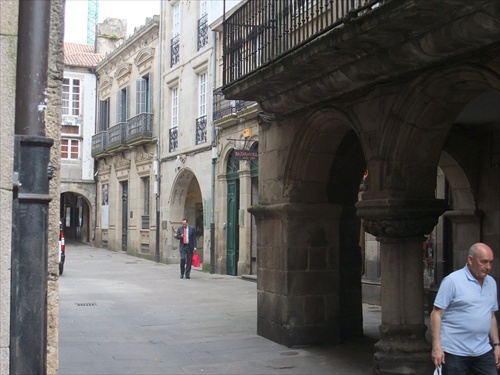

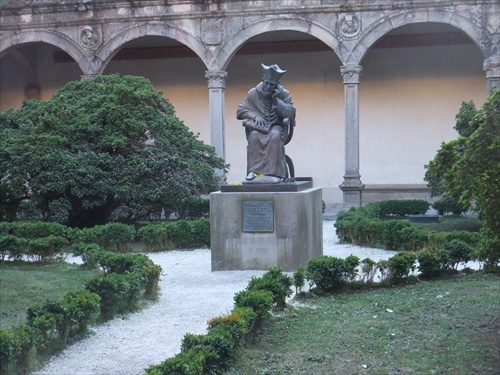


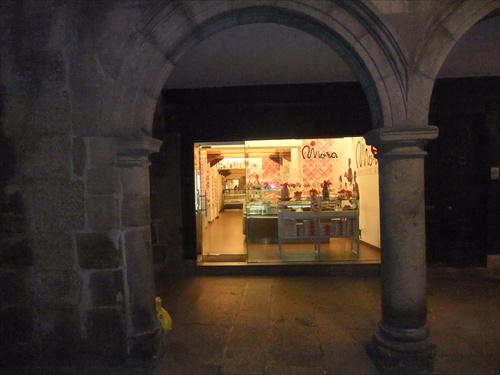

***
People hostile to pilgrimage have good grounds for their disapproval. They must not think, however, that their views are modern. All sorts of people have opposed and even stifled the Way of Saint James. French revolutionaries, political heavies like the Sun King and Napoleon Bonaparte. Sophisticates in general, across the ages. And Al Mansur, obviously.
For a while, the Way was favoured by powerful people and institutions: Charlemagne’s heirs; popes and episcopal figures; counts and monarchs of Navarre, Castile, Asturias, León, and Aragon; the great monastic powers, especially Cluny; Templars and Hospitallers, needless to say.
One likes to feel worldly and knowing when talking of political reality, convenience and contrivance. With the way to Jerusalem blocked by Muslims, and Roman pilgrimage less desirable at times, the appearance of the bones of Saint James was better than miraculous. It was good politics that became good business. But does that explain the urge of millions to follow the line of the Milky Way? We can be too shrewd.
The Way is now so solidly back in fashion. It’s taken a thousand years for warm weather and political stability to coincide and make it easier. Nonetheless, it’s surprising that we do it now, in our hundreds of thousands.
This blog is not concluded, because, after some muddling, I ended up walking from Santiago to Fisterra, which, for some people, is the true end of the Way. But because I’ve arrived at what for others is the true end, I’ll make a concluding comment here.
I don’t do Deep. But I’m going to have to sound a bit that way. Sorry.
There are a few minor reasons for walking the Camino, and one compelling reason.
I know the minor reasons, I don’t know the compelling reason.
***
Look! Sun’s out!
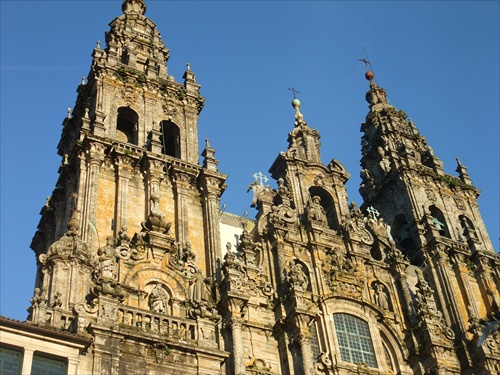
Read Full Post »











